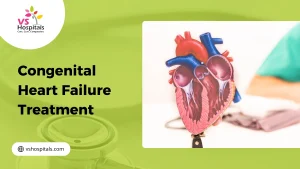Cardiac catheterization surgery is a vital procedure used to diagnose and treat various heart conditions. This minimally invasive technique involves inserting a thin tube called a catheter into a blood vessel, guiding it to the heart to assess its function and identify potential issues. It is often used to address blockages, repair structural defects, or evaluate heart valves. Cardiac catheterization surgery plays a crucial role in improving heart health and ensuring timely and effective treatment.
What Is Cardiac Catheterization Surgery?
Cardiac catheterization surgery is a specialized medical procedure that helps diagnose and treat heart conditions using a thin, flexible tube called a catheter. The catheter is inserted into a blood vessel, usually in the groin or arm, and guided to the heart.
This procedure offers several benefits:
- Diagnoses heart conditions like blocked arteries, valve problems, or structural defects.
- Performs treatments such as stent placement or angioplasty.
- Monitors heart health through pressure measurements or tissue biopsies.
Cardiac catheterization surgery is minimally invasive and essential for identifying and addressing heart issues efficiently.
When Would Cardiac Catheterization Be Needed?
Cardiac catheterization surgery is essential when precise heart evaluation and treatment are required. It is commonly recommended in cases of:
- Symptoms of Heart Disease: Persistent chest pain, shortness of breath, or extreme fatigue.
- Blocked Arteries: To identify and clear artery blockages.
- Heart Valve Issues: Evaluate and treat valve abnormalities.
- Congenital Heart Defects: Repair structural problems from birth.
Choosing the best hospital for cardiac catheterization ensures accurate results and personalized care tailored to your heart health needs.
Key Procedures in Cardiac Catheterization Surgery
Coronary Angiogram
A coronary angiogram uses a special dye and X-rays to detect blockages or narrowing in the coronary arteries. The catheter guides the dye into the heart’s arteries, providing detailed images for diagnosis and treatment planning. This is often the first step in determining the need for further intervention, such as stenting or surgery.
Cardiac Ablation
Cardiac ablation treats abnormal heart rhythms by destroying small areas of heart tissue causing irregular electrical signals. Using the catheter, energy sources like heat or cold are applied to the targeted areas, restoring normal heart rhythms. This is a highly effective treatment for conditions like atrial fibrillation.
Right Heart Catheterization
This procedure measures the pressure in the right side of the heart and pulmonary arteries. It is often used to diagnose heart failure or pulmonary hypertension. The catheter is guided through a vein into the heart, providing critical information about blood flow and heart function.
Balloon Angioplasty
Balloon angioplasty is performed to open narrowed or blocked arteries. A small balloon at the tip of the catheter is inflated at the site of the blockage, improving blood flow. Often combined with stenting, this procedure effectively restores arterial health and prevents future complications.
Balloon Valvuloplasty
This procedure treats narrowed heart valves (stenosis). A balloon-tipped catheter is inserted into the valve and inflated to widen the valve opening, improving blood flow. It is commonly used for conditions like aortic or mitral stenosis, especially in pediatric cardiac catheterization procedures.
Congenital Heart Defect Repair
Catheter-based repairs correct structural heart problems present from birth, such as septal defects. This minimally invasive approach eliminates the need for open-heart surgery, making it a safer option for children and adults. It significantly improves heart function and quality of life.
Heart Biopsy
A heart biopsy involves removing a small tissue sample from the heart using a catheter. This is often done to diagnose conditions like myocarditis or to assess heart transplant rejection. It provides valuable insights for targeted treatments and long-term care.
Risks and Complications
Cardiac catheterization surgery is generally safe when performed by experienced professionals. However, like any medical procedure, it does carry potential risks and complications. It’s essential to understand these to make informed decisions and prepare for the procedure.
- Bleeding or infection at the catheter insertion site.
- Damage to blood vessels, especially in older patients.
- Arrhythmias, or irregular heartbeats, during or after the procedure.
- Rare risks include heart attack or stroke.
Choosing the best hospital for cardiac catheterization significantly reduces these risks. Always discuss concerns with your doctor to ensure a smooth and safe recovery process.
What Happens After the Procedure?
After cardiac catheterization surgery, you will be monitored in a recovery area to ensure there are no complications. Your doctor will check the catheter insertion site and monitor your vital signs. Recovery is typically quick, but some precautions are essential to promote healing and prevent issues.
- The catheter site is checked for bleeding or swelling.
- Vital signs like heart rate and blood pressure are closely observed.
- You may need to lie still for a few hours.
Your care team will provide personalized instructions on managing the catheter site and gradually resuming your daily activities.
Recovering from a Cardiac Catheterization
Recovering from cardiac catheterization surgery is typically quick, but it’s important to follow your doctor’s advice to ensure a smooth recovery. Most patients can return to their normal activities within a few days, depending on the procedure. Here are some essential tips for a safe recovery:
- Rest for at least 24 hours after the procedure.
- Avoid heavy lifting or strenuous activities for a week.
- Keep the catheter insertion site clean and dry to prevent infection.
If you experience unusual pain, swelling, or fever, contact your doctor immediately. Choosing the best hospital for cardiac catheterization ensures comprehensive aftercare.
Conclusion
Cardiac catheterization surgery is a highly effective and minimally invasive procedure for diagnosing and treating various heart conditions. From identifying blockages to repairing structural defects, it plays a pivotal role in ensuring optimal heart health. Following proper post-procedure care and choosing the best hospital for cardiac catheterization surgery can greatly enhance recovery and long-term outcomes. Trust in this advanced technique to safeguard your heart and provide timely solutions for a healthier, more active life.




